Scorpius is one of the twelve zodiac constellations, located in the southern celestial hemisphere. Its name is Latin, for scorpion, and it is the 33rd largest constellation in the sky.
Key Facts & Summary
- Scorpius is among the first 48 constellations listed by the Greco-Roman astronomer Ptolemy, in his 2nd century Almagest.
- In our era, Scorpius is now the 33rd largest constellation out of the 88 modern constellations in the sky, occupying an area of around 497 square degrees.
- The brightest star in Scorpius is the red supergiant Antares, which has an apparent magnitude of 0.6, which varies up to 1.6 and +5.5.
- This makes Antares to often be the 15th brightest star in the night sky. It is among the largest known stars visible to the naked eye.
- Currently, around 14 stars in Scorpius have been confirmed to host planets.
- Apart from the brightest star, Antares, some other important stars in Scorpius are Acrab, Dschubba, Sargas, Jabbah, Acrab, Pi Scorpii, Alniyat, Paikauhale, Shaula, and Lesath.
- The constellation of Scorpius hosts 4 Messier objects, they are the open clusters Messier 6, and Messier 7, and the globular clusters Messier 4 and Messier 80.
- There are two meteor showers associated with the constellation of Scorpius, the Alpha Scorpiids, and the Omega Scorpiids.
- Some other interesting deep-sky objects in Scorpius include the NGC 6231 open cluster, the planetary nebula 6302, or the Cat’s Paw Nebula.
- U Scorpii is a recurrent nova system in Scorpius, one of the 10 known recurrent novae in the Milky Way. It is the fastest nova with a period of around 10 years.
- The best time of the year to observe the stars and deep-sky objects in Scorpius is during the month of July when the constellation is prominent.
- Scorpius pre-dates the Greeks, being an ancient constellation.
The constellation of Scorpius is associated with many myths alongside Orion, the celestial hunter. In one myth, the legendary hunter boasted to the goddess Artemis that he could kill any animal on Earth.
Artemis sent a scorpion to kill Orion, and as their battle went on, it caught the attention of Zeus, who raised them both to the sky to serve as a reminder for mortals to curb their excessive pride.

In another version of the myth, it was Artemis’ twin brother, Apollo, who sent the scorpion to kill Orion, after the hunter earned the goddesses’ favor by admitting she was better than him.
After Zeus raised Orion and the scorpion in the sky, the former hunts every winter but flees every summer when the scorpion returns. In both versions, it was Artemis that asked Zeus to raise Orion to the sky.

Location
The constellation of Scorpius is the 33rd largest constellation in the sky. Scorpius spreads out for over 497 square degrees, it lies in the third quadrant of the southern hemisphere (NQ3) and can be seen at latitudes between +40o and -90o.
- Right Ascension: 16.8875h
- Declination: -30.7367o
- Visible: between +40o and -90o
- Best viewed: at 21:00 (9 p.m.) during July

Scorpius is bordered by the constellation of Ara, Corona Australis, Libra, Lupus, Norma, Ophiuchus, and Sagittarius. Scorpius is part of the zodiac family of constellations, along with Aries, Taurus, Gemini, Cancer, Leo, Virgo, Libra, Sagittarius, Capricornus, Aquarius, and Pisces.
Messier Objects
There are only four Messier objects in the constellation of Scorpius, the open clusters Messier 6, and Messier 7, and the globular clusters Messier 4 and Messier 80.
Messier 6
Messier 6, also known as the Butterfly Cluster, or NGC 6405, is an open cluster of stars in Scorpius, located at around 1,590 light-years away from us, having an apparent magnitude of 4.2.
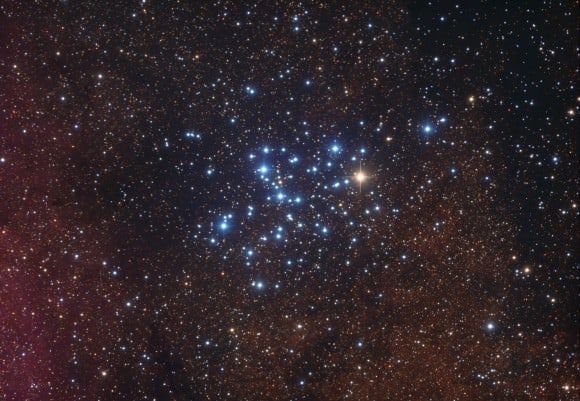
Messier 6 has a radius of 6 light-years, it is 94.2 million years old, and contains 120 stars, raging around magnitude 15.1. Most of the stars here are hot, blue B-type stars, yet the brightest member is an orange K-type giant star, BM Scorpii.
Messier 7
Messier 7, also known as the Ptolemy Cluster, or NGC 6475, is an open cluster, being the southernmost Messier object. It is located at around 980 light-years away from the Solar System, and it was known since antiquity.

Ptolemy described it as a nebula in 130 AD. This open cluster has an apparent magnitude of 3.3, and it has a radius of 25 light-years. Around 80 stars are part of this cluster, they have a combined mass of around 735 times that of the Sun. This cluster is around 200 million years old.
Messier 4
Messier 4, also designated as NGC 6121, is a globular cluster, the first one in which individual stars were resolved. It is located at around 7,200 light-years away from us, being the closest globular cluster to the Solar System. It has an apparent magnitude of +5.9.

Messier 4 has a radius of around 35 light-years, and it is situated at around 1.3 degrees west of the brightest star in Scorpius, Antares. Both objects are visible in wide-field telescopes.
Messier 4 is a loosely concentrated cluster of class IX and measures around 75 light-years across, and it is around 12.2 billion years old.
Messier 80
Messier 80, also designated as NGC 6093, is a globular cluster discovered by Charles Messier in 1781. It is located at around 32,600 light-years away. It is situated in a field of the Milky Way that is rich in nebulae, and it can be observed through modest telescopes.

Messier 80 has an apparent magnitude of +7.87 and has a radius of around 48 light-years. Messier 80 contains hundreds of stars, and it is among the more densely populated globular clusters in the Milky Way.
Notable Stars
The brightest star in Scorpius is the red supergiant Antares, which has an apparent magnitude of 0.6, which varies up to 1.6 and +5.5. Apart from the brightest star, Antares, some other important stars in Scorpius are Acrab, Dschubba, Sargas, Jabbah, Acrab, Pi Scorpii, Alniyat, Paikauhale, Shaula, and Lesath. Currently, around 14 stars in Scorpius have been confirmed to host planets.

Antares
Antares, designated as Alpha Scorpii, is the brightest star in the constellation of Scorpius, and usually the 15th brightest star in the night sky.
Antares is a red supergiant star and a slow irregular variable star that ranges in brightness from magnitude +0.6 to +1.6. This star is often referred to as the “heart of the scorpion”.

This supergiant red star would reach the orbits of Mars and Jupiter if it were placed in our Solar System, instead of our Sun. Antares is the brightest, most massive, and most evolved star of the nearest OB association, the Scorpius-Centaurus Association.
Antares is actually a binary star, with its two components being the red supergiant star Antares A, and a hot main-sequence star, Antares B. Antares A has around 1,100% of our Sun’s mass, 6,800% of its radius, it is 75,900 times brighter than our Sun. It is located at around 550 light-years away from us, and it is cooler than our Sun.

Antares B, on the other hand, has temperatures of around 18,500 K, being more than three times hotter than our Sun. Antares B has around 720% of our Sun’s mass, 520% of its radius, and it is 2,754 times brighter than our Sun.
Antares B is also a fast-spinning star having a rotational velocity of around 250 km / 155.3 mi per second. The ancient Greeks named Antares – “rival to Ares – Opponent to Mars – due to the star’s similarly reddish hue.
Shaula
Shaula, designated as Lambda Scorpii, is the second-brightest star in the constellation of Scorpius, and the 24th brightest star in the night sky.
Shaula has an apparent magnitude of 1.62., and it is actually a triple star system, composed out of two B-type stars and a pre-main-sequence star.

The primary star, Shaula A, has around 1,450% of our Sun’s mass, 880% of its radius, and it is 36,500 times brighter than our Sun. It is a very hot star, having a temperature of around 25,000 K (more than 5 times hotter than our Sun), and it spins fastly, with a rotational velocity of around 150 km / 93.2 mi per second.
The secondary star, Shaula B, has around 960% of our Sun’s mass, 470% of its radius, and it is also more than 5 times hotter than our Sun.
Acrab
Acrab, designated as Beta Scorpii, is a multiple star system composed out of 6 stars organized into two pairs of three. The first-star system is designated as HR 5984, and it has an apparent magnitude of 2.62.
The secondary-star system is designated as HR 5985, and it has an apparent magnitude of 4.92. These systems are located around 400 light-years away from us.

HR 5984, the primary system, is composed out of Beta Scorbii Aa, Ab, and B, while HR 5985 is composed out of Beta Scorpii Ea, Eb, and C.
Beta Scorpii Aa is the largest star in the system, having 1,500% of our Sun’s mass, 630% of its radius, and it is 31,600 times brighter than our Sun, having a temperature of around 28,00 K.
Beta Scorpii Ab, is the second-largest star, having 1,040% of our Sun’s mass, 400% of its radius, and it is 7,900 times brighter than our Sun, with surface temperatures of around 26,400 K.
Beta Scorpii C is the third-largest star, having 820% of our Sun’s mass, 290% of its radius, and it is 3,200 times brighter than our Sun, having a temperature of around 24,000 K.

Beta Scorpii Ea, is the fourth-largest star, having 350% of our Sun’s mass, 240% of its radius, and it is 126 times brighter than our Sun, having a temperature of around 13,000 K. All of these stars are several times hotter than our Sun.
Dschubba
Dschubba, designated as Delta Scorpii, is a binary star located at around 136 parsecs away from us, having a combined apparent magnitude of 2.307.

Dschubba is a Gamma Cassiopeiae variable star. It has around 1,300% of our Sun’s mass, 670% of its radius, and it is 38,000 times brighter than our Sun. Dschubba is also a fast-spinning star, having a rotational velocity of around 180 km / 111.8 mi per second. This star is 4.7 times hotter than our Sun, having a temperature of around 27,400 K.
Its companion is also quite massive, having 820% of our Sun’s mass, and it is also more than 4 times hotter than our Sun, having temperatures of around 24,000 K.
Sargas
Sargas, designated as Theta Scorpii, is a binary star located at around 300 light-years away from us. It has an apparent magnitude of 1.87, being the 39th brightest star in the night sky.
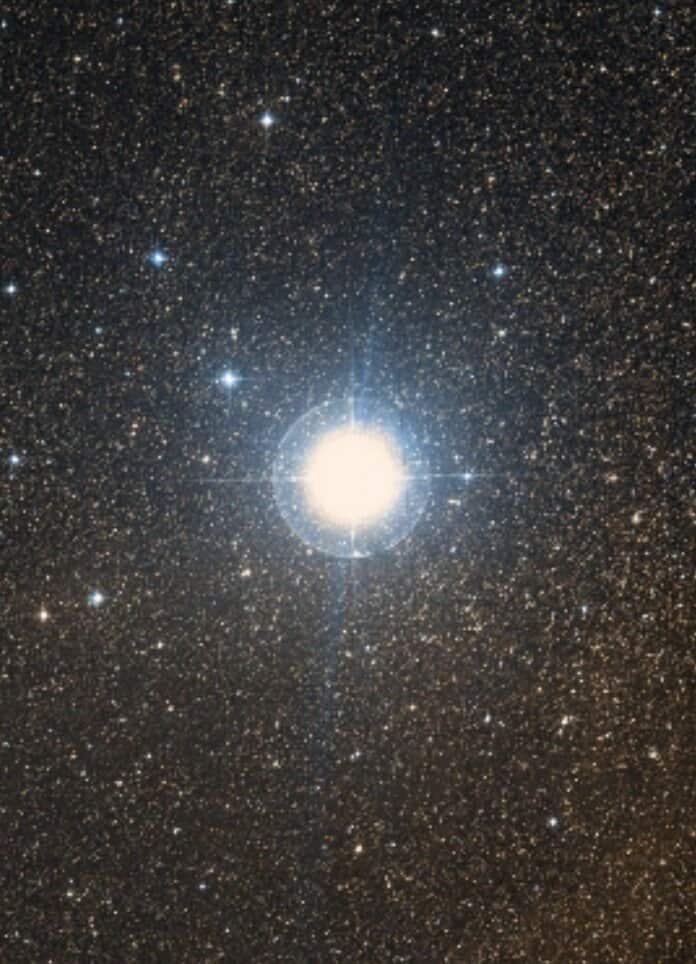
Sargas is an evolved bright yellow giant star that has around 566% of our Sun’s mass, 2,600% of its radius, and it is 1,834 times brighter than our Sun. It is also a fast-spinning star having a rotational velocity of around 125 km / 77.6 mi per second.
Sargas has an oblate shape due to its fast rotation, thus, its equatorial radius is 19% larger than its polar radius. Sargas is also the third brightest star in Scorpius.
Epsilon Scorpii
Epsilon Scorpii, also known as Larawag, is the fifth brightest star in Scorpius, located at around 63.7 light-years away from us. It has an apparent magnitude of +2.310.
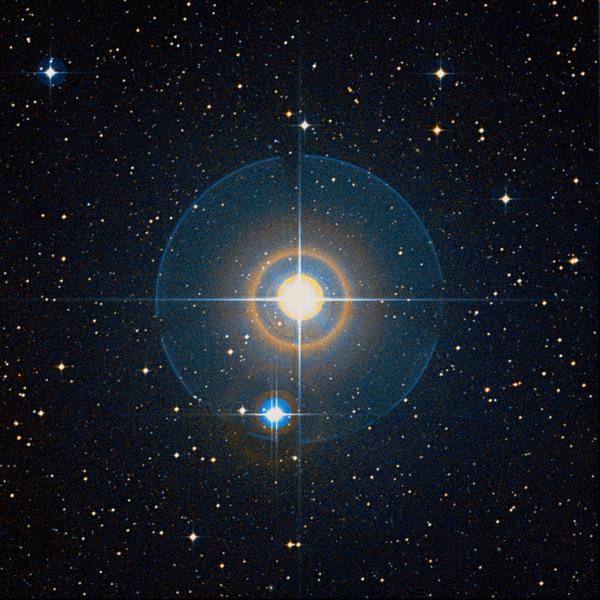
Epsilon Scorpii is a K-type giant star, having 124% of our Sun’s mass, 1,260% of our Sun’s radius, however, it is cooler than our Sun, with temperatures of around 4,560 K.
Girtab
Girtab, designated as Kappa Scorpii, is a binary star located at around 480 light-years away from us. It has an apparent magnitude of 2.39. The primary star, Girtab A, is also a variable Beta Cephei star.

Girtab has around 1,700% of our Sun’s mass, 680% of its radius, and it is 6,911 times brighter than our Sun. This star is hotter than our Sun as well, having temperatures of around 23,400 K, and it is also spinning fast, having a rotational velocity of 105 km / 65.2 mi per second.
The companion star, Girtab B, has around 1,200% of our Sun’s mass, 580% of its radius, and it is also hotter than our Sun, having temperatures of around 18,800 K.
Pi Scorpii
Pi Scorpii, also known as Fang, is a triple star system located at around 590 light-years away from Earth, having an apparent magnitude of 2.890.
The primary star A, forms an eclipsing binary event of the Beta Lyrae type. Both of its members are hot, B-type main-sequence stars that regularly eclipse each other.

The primary star, A, has around 1,250% of our Sun’s mass, 500% of its radius, and it is 21,900 times brighter than our Sun. This star is several times hotter than our Sun as well, having a temperature of around 25,230 K, and it is also a fast-spinning star, with a rotational velocity of 108 km / 67.1 mi per second.
The secondary star has around 400% of our Sun’s radius, and it is also a fast-spinning star, having a rotational velocity of around 87 km / 54 mi per second.
Jabbah
Jabbah, also designated as Nu Scorpii, is a multiple star system located at around 470 light-years away from us. The system is broken down into three groups, Nu Scorpii A, which has an apparent magnitude of 4.349, Nu Scorpii B, at 6.60, and Nu Scorpii CD at 6.30.
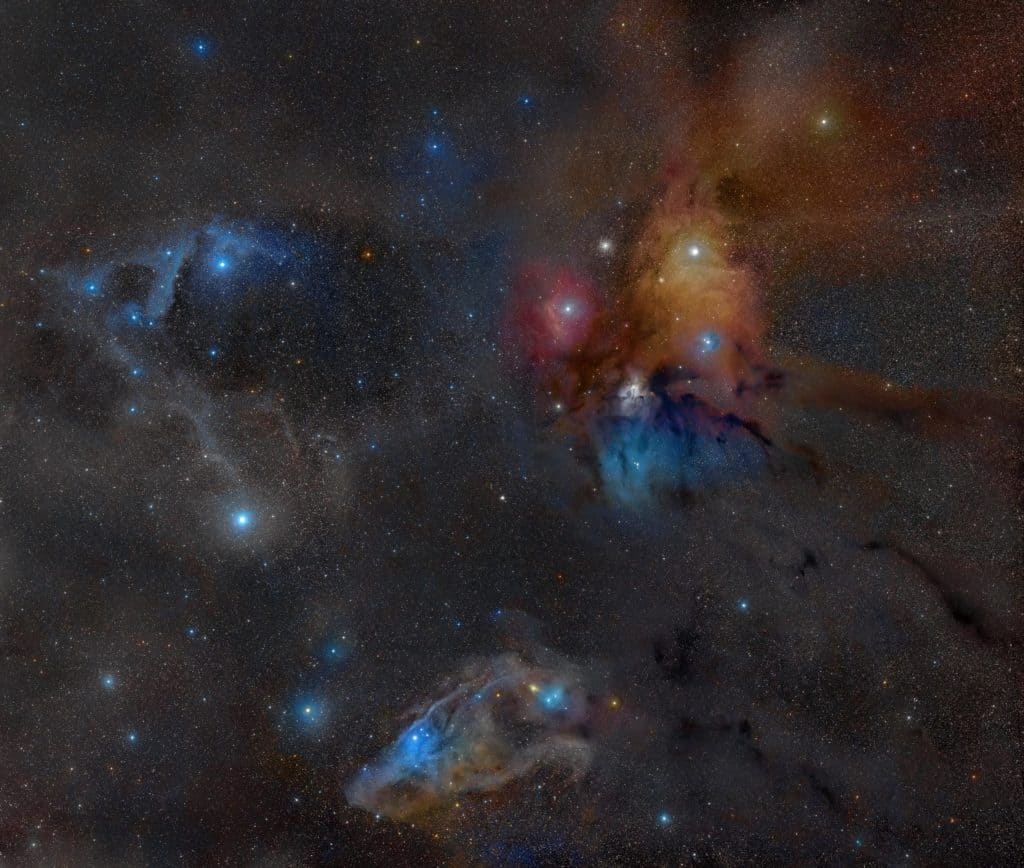
U Scorpii
U Scorpii is a recurrent nova system in Scorpius, one of the 10 known recurrent novae in the Milky Way. It is the fastest nova with a period of around 10 years.

U Scorpii is located near the northern edge of Scorpion, having a maximum apparent magnitude of 7.5, and a minimum of 17.6. U Scorpii is situated at around 19,600 light-years.
Lesath
Lesath, also designated as Upsilon Scorpii is a subgiant star located at around 580 light-years away from us in the “stringer” of Scorpius. It has an apparent magnitude of 2.70.

Lesath has around 1,140% of our Sun’s mass, 610% of its radius, and it is 7,381 times brighter than our Sun. This star is quite young, being around 20 million years old. Lesath is several times hotter than our Sun, having temperatures of around 22,831 K.
G Scorpii
G Scorpii, also known as Fuyue, is an orange K-type giant star located at around 125 light-years away from us. It has an apparent magnitude of 3.21.
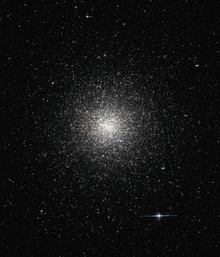
G Scorpii has around 120% of our Sun’s mass, 2,000% of its radius, and it is 93 times brighter than our Sun. Just 5 arcminutes to the est of this star is the globular cluster NGC 6441.
Eta Scorpii
Eta Scorpii is a subgiant star located at around 73.5 light-years away from us. It has an apparent magnitude of 3.33, being among the brightest of the southern stars of Scorpius.

Eta Scorpii has around 175% of our Sun’s mass, 1,770% of its radius, and it is a fast-spinning star, having a rotational velocity of around 150 km / 93.2 mi per second.
Zeta1 Scorpii
Zeta1 Scorpii is a B-type hypergiant located at around 2,600 light-years away from us. It has an apparent magnitude of 4.705. This star is among the brightest stars in our galaxy, being 850,000 times brighter than our Sun.

Zeta1 Scorpii has around 3,600% of our Sun’s mass, 130,00% of its radius, and it has temperatures of around 17,200 K.
Pismis 24-1
Pismis 24-1, also designated as HD 319718, is the brightest star of the open cluster Pismis 24, which is within the nebula NGC 6357. This star is located at around 6,500 light-years away from us. It has an apparent magnitude of 11.00.
Pismis 24-1 is composed out of two stars with impressive feats. The star designated as NE has around 7,400% of our Sun’s mass, 1,800% of its radius, and it is 776,000 times brighter than our Sun. It has temperatures of around 42,500 K, being 7.3 times hotter than our Sun.

The secondary star, SW, has around 6.600% of our Sun’s mass, 1,700% of its radius, and it is 646,000 times brighter than our Sun. This star is also extremely hot, having surface temperatures of around 40,000 K.
Scorpius X-1
Scorpius X-1 is a neutron star, and the first extrasolar X-ray source discovered, and it is among the strongest sources of X-rays in the sky. This star is situated at around 9,000 light-years away from us.

Scorpius X-1 is 60,000 times brighter than our Sun, having around 140% of our Sun’s mass. It also has a companion from which it feeds from.
PSR B1620-26
PSR B1620-26 is a binary star system located at around 12,400 light-years away from us, situated in the globular cluster Messier 4. It has an apparent magnitude of 21.30.
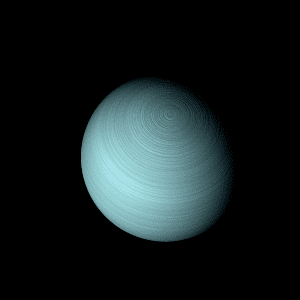
PSR B1620-26 is composed out of a pulsar, designated as PSR B1620-26 A, and a white dwarf star, designated as PSR B1620-26-B. There is also an exoplanet in this system which orbits the stars.
Wray 17-96
Wray 17-96 is one of the most luminous stars in the galaxy, being 1,800,000 times brighter than our Sun. It is situated at around 15,000 light-years away from us, having an apparent magnitude of 13.

Wray 17-96 is an immense star, having around 260,000% of our Sun’s mass. The surface temperatures on this star have been recorded at around 13,000 K.
Deep-sky Objects
The constellation of Scorpius contains several interesting deep-sky objects. The best time to observe them is during the month of July. Apart from the aforementioned Messier objects, some other interesting deep-sky objects in Scorpius are the NGC 6231 open cluster, the planetary nebula 6302, or the Cat’s Paw Nebula, among many others.

Cat’s Paw Nebula
The Cat’s Paw Nebula, designated as NGC 6334, or Gum 64, and also known as Bear Claw Nebula, is an emission nebula and star-forming region located at around 5,500 light-years away from us. The Cat’s Paw Nebula has a radius of around 40 light-years.

Butterfly Nebula
The Butterfly Nebula, also known as NGC 6302, the Bug Nebula, or Caldwell 69, is a bipolar planetary nebula located at around 3,400 light-years away.

It has an apparent magnitude of 7, and the structure in this nebula is among the most complex ever observed. The central star in this nebula, a white dwarf, is among the hottest stars ever discovered, at around 250,000 degrees Celsius. The Butterfly Nebula has a radius of around 1.5 light-years.
NGC 6281
NGC 6281 is an open cluster situated at around 1,611 light-years away from us. This cluster has an apparent magnitude of 5.4, and it contains around 214 solar masses, having a tidal radius of around 26 light-years.

NGC 6124
NGC 6124, also known as Caldwell 75, is an open cluster located at around 18,000 light-years away from us. This cluster contains around 125 stars, and it has an apparent magnitude of 5.8.

Northern Jewel Box Cluster
The Northern Jewel Box Cluster, also known as NGC 6231, or Caldwell 76, is an open cluster located at around half a degree north of Zeta Scorpii. This cluster is 5,600 light-years away from us, and it has an apparent magnitude of 2.6.

The Northern Jewel Box Cluster is slowly approaching our Solar System at 22 km / 13.6 mi per second. It contains many unique and interesting stars.
War and Peace Nebula
The War and Peace Nebula, also designated as NGC 6357, is a diffuse nebula that contains many proto-stars shielded by dark disks of gas, and young stars in expanding gases surrounding them.

This nebula is also known as the Lobster Nebula or the Madokami Nebula. It is among the most prominent sites of massive star formation in the Milky Way.

The War and Peace Nebula contains many O-type stars, Pismis 24, and various other enormous stars. The nebula is located at around 5,900 light-years away from us, being near the emission nebula NGC 6334.

Meteor Shower
There are two meteor showers associated with the constellation of Scorpius. They are the Alpha Scorpiids, and the Omega Scorpiids.

The Alpha Scorpiids occur between 21 April and May 26th, peaking on May 15th every year. It is a minor meteor shower with around 3 meteors per hour at its peak.
Astrology
The Western astrological sign Scorpio differs from the astronomical constellation. Astronomically, the Sun is in Scorpius for around six days, from November 23 to November 28.

Much of the difference is due to the constellation of Ophiuchus, which is used by a few astrologers. Scorpius relates to the Hindu nakshatras, the Anuradha, Jyeshtha, and Mula.
Did you know?
- The Javanese people of Indonesia called Scorpius the Banyakangrem – the brooded swan – or Kalapa Doyong – leaning coconut tree – due to its shape.
- In Hawaii, Scorpius is known as the demigod Maui’s Fishhook.
- Scorpius was divided into two asterisms that were used by the Bugis people for navigation. The northern part of Scorpius was called the “skate stars” while the southern part, the “shark stars”.
- The Babylonians called Scorpius MUL.GIR.TAB – the creature with the burning sting.
- In some old descriptions, the constellation of Libra is treated as the Scorpion’s celestial claws. Libra was known as the Claws of the Scorpion in Babylonia.
Sources:
Image Sources:
- https://www.abc.net.au/science/starhunt/images/slideshow/Scorpius/scorpius_01.jpg
- https://earthsky.org/upl/2013/07/scorpius-orion-Hyaku.jpg
- https://in-the-sky.org/images/constellations/con_SCO_000.png
- https://www.universetoday.com/wp-content/uploads/2009/05/m6_eguivar_1600-580×401.jpg
- https://upload.wikimedia.org/wikipedia/commons/thumb/a/a5/The_star_cluster_Messier_7.jpg/1200px-The_star_cluster_Messier_7.jpg
- https://upload.wikimedia.org/wikipedia/commons/a/a5/M4HunterWilsonNew.jpg
- https://upload.wikimedia.org/wikipedia/commons/thumb/6/6a/A_Swarm_of_Ancient_Stars_-_GPN-2000-000930.jpg/1200px-A_Swarm_of_Ancient_Stars_-_GPN-2000-000930.jpg
- https://www.go-astronomy.com/images/constellations/Scorpius.jpg
- https://nineplanets.org/wp-content/uploads/2019/12/Antares-Betelgeuse.jpg
- https://earthsky.org/upl/2016/07/Antares-AstroPixels-Fred-Espenak-2-e1467228071849.jpg
- https://www.star-facts.com/wp-content/uploads/2019/09/Shaula.jpg?189db0&189db0
- https://www.constellationsofwords.com/images/stars/Acrab.JPG
- https://astrologyking.com/wp-content/uploads/acrab-star-beta-scorpii.jpg
- https://i.pinimg.com/originals/1f/8e/4e/1f8e4e4ded8df974151a054eb372432a.jpg
- https://pbs.twimg.com/media/DLAMx3cXoAALfGM.jpg
- https://alchetron.com/cdn/xi-scorpii-da6deca6-5d25-464b-9949-20e10af799b-resize-750.jpg
- https://alchetron.com/cdn/18-scorpii-89b5fd44-ce5c-49c2-806b-f111af09e81-resize-750.gif
- https://live.staticflickr.com/65535/49922384558_6f94d76117_b.jpg
- https://upload.wikimedia.org/wikipedia/commons/9/98/Rho_Ophiucus_Widefield.jpg
- https://www.universetoday.com/wp-content/uploads/2010/01/Recurrent-nova1.jpg
- https://theskylive.com/sky/stars/finder-charts/lesath-upsilon-scorpii-finder-chart.png?c=1586709704
- https://upload.wikimedia.org/wikipedia/commons/thumb/d/d5/NGC_6441_HST_10775_R814B606.png/220px-NGC_6441_HST_10775_R814B606.png
- https://ialielkouazi.files.wordpress.com/2015/05/270px-eta_scorpii.jpg
- https://theskylive.com/sky/stars/star-images/62/6262_800.jpg
- https://sci.esa.int/documents/34247/35306/1567218228988-heic0619a-wallpaper.jpg/5b7e0b6c-236e-e18e-5d20-c1a9bbabc2d4?version=1.0&t=1567218230689
- https://alchetron.com/cdn/scorpius-x-1-34c103e9-4fb4-4bda-af18-eb3565089e4-resize-750.jpg
- https://alchetron.com/cdn/psr-b1620-26-b-f3418dda-9617-407c-b486-ac36635a863-resize-750.png
- https://upload.wikimedia.org/wikipedia/commons/thumb/5/5d/AG_Carinae_%28HD_94910%29.png/260px-AG_Carinae_%28HD_94910%29.png
- https://www.thoughtco.com/thmb/V3d0qknyQtMLnY_2bhJde16kMUc=/908×676/filters:no_upscale():max_bytes(150000):strip_icc()/scorpius2016-5b71b538c9e77c00508494a3.jpg
- https://cdn.eso.org/images/screen/eso1705a.jpg
- https://www.universetoday.com/wp-content/uploads/2020/06/STScI-H-p2031b-m-2000×1778-1.jpg
- https://lh3.googleusercontent.com/proxy/RGieYLrBh2M1jfEdBLMBL6odQtbxu98qd3a8_6fbVUx5qQJuYJ58Ot3SQ13a1H88zfkt69VzSUhEWhtx82TkuPyT3VNTW-Bf1GJGj-qdvfPjbO4ICw
- https://media.sciencephoto.com/image/r6140174/800wm
- https://www.constellation-guide.com/wp-content/uploads/2015/07/Jewel-Box.jpg
- https://upload.wikimedia.org/wikipedia/commons/thumb/1/1f/Cosmic_%E2%80%98Winter%E2%80%99_Wonderland.jpg/970px-Cosmic_%E2%80%98Winter%E2%80%99_Wonderland.jpg
- https://wp-assets.futurism.com/2013/12/6.jpg
- https://www.universetoday.com/wp-content/uploads/2012/06/war-and-peace-nebula.jpg
- https://images.squarespace-cdn.com/content/5b401559b10598e2e4119ce8/1548030863772-M79DAGB7K8S2K4MTX39Y/idknameyet3.jpg?content-type=image%2Fjpeg
- https://upload.wikimedia.org/wikipedia/commons/thumb/c/cf/Sidney_Hall_-_Urania%27s_Mirror_-_Scorpio.jpg/715px-Sidney_Hall_-_Urania%27s_Mirror_-_Scorpio.jpg
